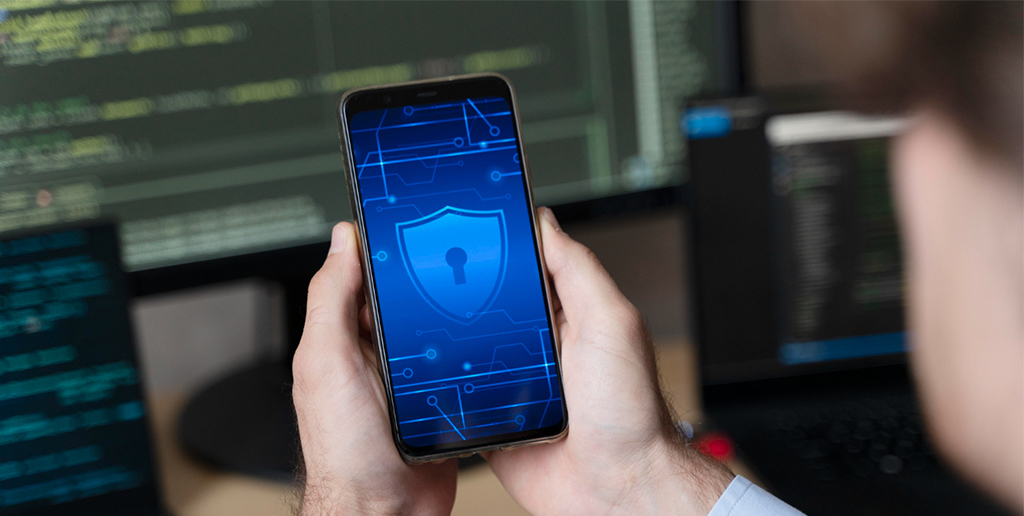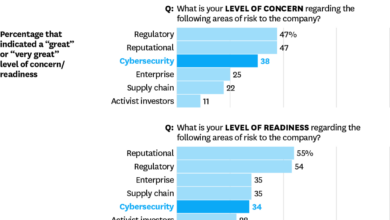
Best Mobile Security Apps for iOS and Android Devices
Best mobile security apps for iOS and Android devices are more crucial than ever. In today’s hyper-connected world, our phones hold our entire lives – from banking details to private photos. A single security breach can be devastating, leaving you vulnerable to identity theft, financial loss, and even harassment. This post dives into the best apps to protect your digital life, comparing features, ease of use, and overall effectiveness for both Apple and Android users.
We’ll explore the top contenders for each operating system, examining their unique strengths and weaknesses. We’ll also cover essential security features like anti-malware, VPNs, and anti-phishing tools, helping you understand how they work and why they matter. Finally, we’ll go beyond the apps themselves, providing practical tips for keeping your phone safe and secure.
Introduction to Mobile Security Apps
In today’s hyper-connected world, our smartphones hold a treasure trove of personal information – from banking details and medical records to private photos and sensitive communications. This makes mobile security paramount, and mobile security apps are becoming increasingly crucial for protecting ourselves from a growing number of digital threats. These apps offer a proactive defense against various vulnerabilities, ensuring our data remains safe and our devices function smoothly.Mobile devices face a wide range of threats, constantly evolving with technological advancements.
These threats extend beyond simple viruses and malware to encompass sophisticated phishing attacks, spyware capable of stealing personal data, ransomware locking access to our phones, and even SIM swapping attacks compromising our phone numbers and associated accounts. The increasing reliance on mobile devices for everything from online banking to social interactions makes us a prime target for cybercriminals.
Mobile Security Breach Statistics and Impact
The impact of mobile security breaches is significant and far-reaching. Reports from organizations like Cybersecurity Ventures estimate billions of dollars in losses annually due to mobile device compromises. These breaches not only lead to financial losses but also cause significant reputational damage, identity theft, and emotional distress for victims. For example, a large-scale data breach affecting a mobile banking app could result in widespread financial fraud, leading to substantial monetary losses for both the bank and its customers.
Beyond financial implications, the exposure of personal information can have long-term consequences, impacting credit scores and overall security for years to come. The sheer volume of data stored on mobile devices and the increasing sophistication of cyberattacks highlight the urgent need for robust mobile security measures. A recent study by a leading cybersecurity firm showed a significant increase in mobile malware infections in the past year, emphasizing the growing threat landscape.
The consequences can range from minor inconvenience to severe financial and personal repercussions.
Choosing the best mobile security apps for iOS and Android is crucial in today’s digital landscape. Security is paramount, and building robust apps requires careful consideration, which is why I recently dove into the world of app development, specifically reading about domino app dev the low code and pro code future to understand how developers create secure platforms.
Ultimately, strong app security starts with choosing the right tools, and that includes having top-notch mobile security apps on your devices.
Top iOS Security Apps
Choosing the right security app for your iOS device can feel overwhelming, given the sheer number of options available. This guide focuses on several top contenders, comparing their features, pricing, and user reception to help you make an informed decision. Remember that no single app offers perfect protection, and a multi-layered approach to security, including strong passwords and cautious online behavior, is always recommended.
iOS Security App Comparison
The following table compares five leading iOS security apps across key features, pricing, and user feedback. User reviews are summarized and represent a general consensus, not a definitive statement of every user’s experience. Pricing can vary depending on subscription plans and in-app purchases.
| App Name | Key Features | Pricing | User Reviews Summary |
|---|---|---|---|
| Lookout | Antivirus, VPN, Identity theft protection, Safe Browsing, Device locator | Free plan with limited features; premium subscription available | Generally positive; praised for ease of use and comprehensive features; some complaints about occasional false positives. |
| Malwarebytes | Antivirus, Anti-phishing, Web protection, Privacy audit | Free plan with limited features; premium subscription available | Positive reviews; users appreciate the straightforward interface and effective malware detection; premium features highly rated. |
| McAfee Mobile Security | Antivirus, App lock, Identity theft protection, VPN, Call blocker | Free plan with limited features; premium subscription available | Mixed reviews; some users find it effective, others report slow performance or excessive notifications. |
| Norton Mobile Security | Antivirus, VPN, Web protection, App advisor, Device locator | Free plan with limited features; premium subscription available | Generally positive; praised for its strong reputation and reliable virus protection; some users find the interface cluttered. |
| Kaspersky Security Cloud | Antivirus, VPN, App lock, Privacy checker, Safe browsing | Free plan with limited features; premium subscription available | Positive reviews; users appreciate the robust security features and user-friendly design; some complaints about the size of the app. |
Detailed Feature Analysis
Each app boasts a unique set of features designed to address specific security concerns. Lookout’s identity theft protection stands out, proactively monitoring for signs of compromised personal information. Malwarebytes excels in its anti-phishing capabilities, safeguarding against fraudulent websites. McAfee’s call blocker provides an additional layer of privacy, while Norton’s app advisor helps users identify potentially risky applications. Kaspersky’s privacy checker allows users to assess and improve their overall online privacy settings.
These unique selling propositions cater to different user needs and priorities.
User Interface and User Experience
The user interface and user experience (UI/UX) vary significantly across these apps. Some, like Malwarebytes, prioritize a clean and intuitive design, making them accessible to even less tech-savvy users. Others, such as Norton, might offer a more feature-rich but potentially cluttered interface. The optimal UI/UX is subjective and depends on individual preferences, but generally, a balance between functionality and ease of use is desirable.
Many apps offer tutorials and helpful guides to navigate their features effectively.
Top Android Security Apps
Choosing the right security app for your Android device is crucial in today’s digital landscape, where threats are constantly evolving. A robust security app provides a multi-layered defense against malware, phishing attempts, and other online dangers, safeguarding your personal data and online privacy. This section will delve into some of the top Android security apps available, comparing their features, pricing, and user reception to help you make an informed decision.
Android Security App Comparison
Selecting the best Android security app depends heavily on individual needs and preferences. Some prioritize comprehensive features, while others focus on specific aspects like anti-theft or VPN capabilities. The following table compares five leading Android security apps, highlighting their key features, pricing models, and user feedback.
| App Name | Key Features | Pricing | User Reviews (Summary) |
|---|---|---|---|
| Bitdefender Mobile Security | Antivirus, VPN, anti-theft, app lock, web protection, system vulnerability scanner | Free (limited features), Premium subscription available | Generally positive, praised for its comprehensive features and ease of use. Some users find the free version too limited. |
| Avast Mobile Security | Antivirus, VPN, anti-theft, app lock, Wi-Fi security scan, call blocker | Free (with ads), Premium subscription available | Mixed reviews. Free version is functional but ad-supported. Premium version is well-regarded for its performance. |
| Kaspersky Mobile Antivirus | Antivirus, anti-theft, app lock, web protection, call filtering, privacy protection | Free (limited features), Premium subscription available | Positive reviews overall, noting strong malware detection and user-friendly interface. Some users report occasional performance issues. |
| Norton Mobile Security | Antivirus, anti-theft, VPN, app lock, web protection, identity theft protection | Free (limited features), Premium subscription available | Mostly positive, highlighting its reputation and strong malware detection capabilities. Premium features are highly valued. |
| Lookout Mobile Security | Antivirus, anti-theft, VPN, identity theft protection, safe browsing | Free (limited features), Premium subscription available | Generally positive, known for its robust anti-theft features and identity monitoring. Some users find the interface less intuitive than competitors. |
Strengths and Weaknesses of Android Security Apps
Each app possesses unique strengths and weaknesses. Bitdefender excels in its comprehensive feature set and user-friendly design, but its free version is limited. Avast offers a good balance of features in its free version but relies on ads. Kaspersky is known for strong malware detection, but some users have reported performance issues. Norton’s reputation precedes it, offering reliable protection, while Lookout shines with its robust anti-theft and identity protection features.
Ultimately, the best choice depends on individual priorities and budget.
Security Protocols Comparison
The security protocols employed vary between these apps, but all utilize a combination of techniques. These commonly include signature-based detection (identifying known malware), heuristic analysis (detecting suspicious behavior), and cloud-based scanning (leveraging a vast database of threats). Specific implementations and the extent of real-time protection differ. Many also incorporate VPNs using various encryption protocols like OpenVPN or WireGuard, providing secure connections to public Wi-Fi networks.
Detailed specifications regarding the precise protocols used are often not publicly available for proprietary reasons.
Feature Comparison: Best Mobile Security Apps For Ios And Android Devices
Understanding the differences between iOS and Android security apps requires acknowledging the inherent security differences between the operating systems themselves. iOS, with its closed ecosystem, offers a more restrictive environment, inherently limiting the potential attack surface. Android, being open-source, presents a larger target for malicious actors, necessitating more robust security measures within its apps. This fundamental difference shapes the features and functionalities of security apps designed for each platform.The implications of these differences are significant.
iOS apps often focus on simpler, streamlined security features, leveraging the built-in OS security. Android apps, conversely, often need to compensate for potential vulnerabilities within the Android ecosystem, offering a broader range of features and deeper system integration.
iOS and Android Security App Feature Comparison
The table below compares common features found in leading security apps for both iOS and Android. Note that specific features and their effectiveness can vary significantly between individual apps.
| Feature | iOS Apps | Android Apps | Notes |
|---|---|---|---|
| Antivirus/Malware Protection | Generally less extensive; relies heavily on App Store vetting. Some apps offer basic scanning. | Often includes more comprehensive scanning and real-time protection. | Android’s open nature necessitates more active malware protection. |
| VPN | Commonly integrated; often focuses on privacy and anonymity. | Widely available; often offers more server locations and advanced features. | Android users may require more robust VPN solutions due to potential exposure. |
| Firewall | Limited availability; iOS’s built-in security often suffices. | More common; offers granular control over network access. | Android’s open nature makes a firewall a more desirable security feature. |
| App Permissions Monitoring | Provides basic insights into app permissions. | Often provides more detailed and granular control over app permissions. | Android apps request a wider range of permissions, necessitating more thorough monitoring. |
| System Vulnerability Scanning | Less prevalent; iOS updates often address vulnerabilities proactively. | More common; actively scans for and alerts users to system vulnerabilities. | Android’s fragmentation makes system-level vulnerability scanning crucial. |
| Anti-Phishing Protection | Often integrated into browsers or email clients. | Often integrated into the security app itself, offering real-time protection. | Both platforms are vulnerable to phishing attacks; app-level protection is beneficial. |
Operating System Differences and Security App Functionality
The core difference lies in the operating system architecture. iOS employs a closed, sandboxed environment, limiting the potential for malicious apps to access system resources or sensitive data. Android, with its open-source nature and broader device fragmentation, requires more comprehensive security measures at the app level to compensate for potential vulnerabilities within the OS itself. This is why Android security apps often include features like advanced malware scanning, granular permission controls, and robust VPN capabilities—features that are less critical in the comparatively secure iOS ecosystem.
For instance, an Android security app might offer a built-in firewall to control network traffic, a feature less commonly found in iOS apps due to the OS’s inherent security mechanisms. Conversely, an iOS app might focus on simplifying user experience around privacy settings and password management, leveraging the OS’s strong built-in security.
Security Features Explained

Choosing the right mobile security app often involves understanding the core features that protect your device and data. Let’s delve into some key functionalities and how they contribute to a robust mobile security posture.
Anti-malware Protection
Anti-malware protection is a crucial component of any comprehensive mobile security suite. It works by constantly scanning your device for malicious software, including viruses, Trojans, spyware, and adware. These threats can steal your personal information, monitor your activity, or even damage your device. The scanning process typically involves checking files, apps, and system processes against known malware signatures and using heuristic analysis to identify potentially harmful behavior that hasn’t been seen before.
If a threat is detected, the anti-malware software will usually quarantine or remove it, preventing it from causing harm. Real-time protection ensures that scans happen continuously in the background, providing immediate alerts and actions against new threats. Regular updates to the malware database are vital for effectiveness, ensuring the software can recognize the latest threats. For example, a well-known anti-malware app might detect a newly discovered banking Trojan attempting to steal login credentials from a user’s banking app, immediately notifying the user and blocking the malicious activity.
VPN Functionality for Enhanced Mobile Security
A Virtual Private Network (VPN) creates a secure, encrypted connection between your mobile device and the internet. This encryption prevents third parties, such as your internet service provider (ISP) or hackers on public Wi-Fi networks, from intercepting your data. VPNs mask your IP address, making it more difficult to track your online activity and location. This is particularly important when using public Wi-Fi, where your data is vulnerable to eavesdropping.
Imagine connecting to a public Wi-Fi hotspot at a coffee shop; without a VPN, your online activity, including login credentials and sensitive data, could be visible to others on the same network. A VPN encrypts this data, making it unreadable to anyone who might be trying to intercept it. Furthermore, some VPNs offer additional security features, such as ad blocking and protection against malware.
Anti-phishing Feature Functionality
Anti-phishing features are designed to protect you from fraudulent websites and emails that attempt to steal your personal information, such as usernames, passwords, and credit card details. These features work by analyzing URLs and email content for suspicious patterns and known phishing techniques. For example, an anti-phishing feature might detect a suspicious email claiming to be from your bank, asking you to update your account information through a link.
The feature would analyze the link, identifying it as potentially malicious due to inconsistencies in the domain name or other red flags. The user would then be alerted to the potential threat, preventing them from clicking the link and falling victim to a phishing scam. Advanced anti-phishing features might also use machine learning to identify new and evolving phishing techniques, constantly adapting to the changing landscape of online fraud.
App Permission Management
App permission management allows you to control which permissions each app on your device has access to. This is critical because apps often request access to various data and functionalities, such as your location, contacts, camera, and microphone. By carefully reviewing and managing these permissions, you can minimize the risk of data breaches and privacy violations. For example, a flashlight app might request access to your location.
While this might seem unnecessary, it’s important to understand why an app needs certain permissions before granting them. Granting unnecessary permissions can expose your personal information to potential risks. Careful management of app permissions ensures that apps only access the data they truly need to function correctly, significantly reducing your vulnerability to malicious actors.
Choosing the Right App
Selecting the perfect mobile security app can feel overwhelming, given the sheer number of options available. The best choice depends entirely on your individual needs, technical skills, and the level of protection you require. Consider your daily digital life – do you frequently use public Wi-Fi? Do you handle sensitive financial information on your phone? Understanding your vulnerabilities will guide you towards the most suitable app.Choosing the right mobile security app involves careful consideration of several factors.
A simple antivirus app might suffice for a user with basic needs, while someone handling sensitive data might require a more comprehensive suite with features like VPN and anti-theft capabilities. Prioritizing features based on your individual risk profile is crucial.
App Feature Prioritization Based on User Needs
The features offered by mobile security apps vary significantly. Some focus primarily on malware detection, while others offer a broader range of security tools. To make an informed decision, consider your specific needs and prioritize accordingly. For example, a business professional handling sensitive client data would likely prioritize VPN capabilities and data encryption over features like a built-in call blocker.
A casual user might prioritize ease of use and a simple interface over a multitude of advanced features.
Evaluating User Reviews and App Ratings, Best mobile security apps for ios and android devices
App store ratings and user reviews provide valuable insights into the performance and reliability of a security app. However, it’s crucial to approach this information critically. Don’t solely rely on a high star rating; delve into the individual reviews. Look for recurring themes – consistent praise for a specific feature, or recurring complaints about performance issues or customer support.
Pay close attention to negative reviews, focusing on the specific issues raised and whether the developer has responded and addressed them. A developer’s responsiveness to user feedback is a strong indicator of their commitment to quality and user satisfaction. For example, a consistently low rating coupled with numerous complaints about unresponsive customer service should raise a red flag.
Verifying App Legitimacy and Avoiding Scams
The mobile security app market is unfortunately susceptible to scams. Before downloading any app, verify its legitimacy. Check the developer’s identity and reputation. Look for established companies with a history of providing reliable security software. Be wary of apps promising unrealistic levels of protection or those with suspiciously high ratings and few reviews.
Also, carefully examine the app’s permissions. A legitimate security app might require access to certain system functions, but an excessive number of permissions, particularly those unrelated to security, should raise concerns. For instance, a simple antivirus app should not require access to your contacts or location unless specifically related to a feature like anti-theft. Finally, always download apps from official app stores (Google Play Store and Apple App Store) to minimize the risk of malware.
Beyond Apps
While robust mobile security apps are a crucial first line of defense, relying solely on them is insufficient. True mobile security requires a multi-layered approach encompassing both software and user behavior. Proactive measures and mindful habits significantly reduce your vulnerability to threats. This section explores best practices extending beyond app usage to fortify your device’s security.
Beyond the software solutions, your own actions and habits play a vital role in keeping your mobile devices secure. Neglecting basic security practices can render even the best apps ineffective. Think of it like this: a high-security door is useless if you leave the key in the lock. The following points Artikel essential steps you should take to supplement your app-based security.
Device Password Strength and Two-Factor Authentication
Strong passwords are fundamental. Avoid easily guessable passwords like “password123” or your birthday. Instead, aim for a complex password that combines uppercase and lowercase letters, numbers, and symbols. A password manager can help you generate and securely store these complex passwords. A good password should be at least 12 characters long.
For example, “Tr0ubl3M4k3r$2024” is far stronger than “mypassword”.
Two-factor authentication (2FA) adds an extra layer of security. This method requires two forms of verification before granting access to your account. One is your password, and the second is typically a time-sensitive code sent to your email address or phone number, or a biometric scan. Enabling 2FA on all your important accounts, such as email, banking apps, and social media, is highly recommended.
This prevents unauthorized access even if someone gains your password.
Safe Browsing and Avoiding Malicious Websites
Navigating the internet on your mobile device demands caution. Malicious websites can disguise themselves as legitimate sites, attempting to steal your personal information or install malware. Be wary of suspicious links, especially those received via email or text message. Avoid clicking on links from unknown senders.
Only download apps from official app stores like the Apple App Store or Google Play Store. These stores have security measures in place to vet apps before they are made available to users. When browsing, look for the padlock icon in the address bar, indicating a secure HTTPS connection. If you are unsure about a website’s legitimacy, research it before entering any personal information.
Additional Security Best Practices
Beyond passwords and browsing, several other habits contribute to a stronger mobile security posture. These simple actions can collectively make a significant difference in protecting your data and privacy.
- Keep your software updated: Regularly update your operating system and apps to benefit from the latest security patches.
- Be cautious about public Wi-Fi: Avoid accessing sensitive information on public Wi-Fi networks, as these are often less secure.
- Use a screen lock: Employ a strong passcode, fingerprint, or facial recognition to prevent unauthorized access to your device.
- Regularly review app permissions: Check which permissions your apps have and revoke any unnecessary ones.
- Enable device tracking: In case of theft, enabling “Find My iPhone” (iOS) or “Find My Device” (Android) can help locate your lost device.
- Back up your data: Regularly back up your important data to a secure cloud service or external drive.
- Be mindful of phishing attempts: Be cautious of emails or text messages requesting personal information; legitimate organizations rarely ask for this via such methods.
Future Trends in Mobile Security

The mobile landscape is constantly evolving, bringing with it new opportunities but also escalating security challenges. As devices become more powerful and interconnected, the potential for sophisticated attacks increases exponentially. Understanding emerging threats and the innovative security measures being developed is crucial for maintaining a secure mobile experience.The future of mobile security hinges on proactive adaptation to a dynamic threat environment.
We’re moving beyond simple antivirus solutions towards more holistic approaches that incorporate AI, advanced encryption, and behavioral analysis to anticipate and mitigate threats before they materialize. This proactive stance is critical given the rapidly evolving nature of cybercrime.
Emerging Mobile Security Threats
The threat landscape is constantly shifting. We are seeing a rise in sophisticated phishing attacks designed to mimic legitimate apps or websites, often leveraging social engineering techniques to trick users into revealing sensitive information. Another significant concern is the increasing prevalence of malware specifically targeting mobile devices, capable of stealing data, monitoring activity, or even taking control of the device.
Furthermore, the growing reliance on mobile devices for financial transactions makes them prime targets for financial fraud, with attacks becoming increasingly difficult to detect. For example, the recent surge in SIM swapping attacks, where criminals gain control of a victim’s phone number to access online accounts, highlights the vulnerability of mobile infrastructure.
Innovative Security Features in Mobile Security Apps
Modern mobile security apps are incorporating increasingly sophisticated features. Many now leverage machine learning algorithms to identify and block malicious apps or websites in real-time, analyzing behavior patterns to detect anomalies indicative of malicious activity. Advanced encryption techniques, such as end-to-end encryption for messaging and secure storage of sensitive data, are becoming standard. Biometric authentication, including fingerprint and facial recognition, is also gaining widespread adoption, providing an extra layer of security.
Some apps are even integrating threat intelligence feeds, providing users with real-time information about emerging threats and vulnerabilities. For instance, apps that analyze network traffic for suspicious activity or automatically detect and block known malicious websites are becoming more prevalent.
The Future Direction of Mobile Security Technologies
The future of mobile security will likely involve a convergence of several key technologies. We can expect to see greater integration of AI and machine learning to proactively detect and respond to threats, moving beyond reactive measures to more predictive capabilities. Blockchain technology holds potential for enhancing data security and authentication, providing tamper-proof records of transactions and user activity.
Homomorphic encryption, allowing computations on encrypted data without decryption, could revolutionize secure data processing on mobile devices. Furthermore, the development of more robust and user-friendly multi-factor authentication (MFA) methods will become increasingly important, minimizing the risk of unauthorized access. For example, we may see the widespread adoption of passwordless authentication systems using biometrics or hardware security keys.
End of Discussion
Protecting your mobile device is an ongoing process, requiring a blend of robust apps and smart habits. Choosing the right security app is a personal journey, dependent on your specific needs and budget. By carefully considering the features discussed here and adopting the best practices Artikeld, you can significantly reduce your risk of cyber threats. Remember, a proactive approach is key to maintaining your digital security and peace of mind.
Stay safe out there!
Commonly Asked Questions
What’s the difference between a free and paid security app?
Free apps often offer basic protection, while paid versions typically provide more advanced features like VPN access, identity theft protection, and premium customer support.
Do I need a security app if I already have strong passwords?
While strong passwords are essential, a security app adds multiple layers of protection, including malware scanning, anti-phishing, and potentially a VPN for secure browsing.
How often should I update my security apps?
Security apps should be updated regularly, as new threats emerge constantly. Enable automatic updates whenever possible.
Can a security app slow down my phone?
Some apps might have a slight impact on performance, but reputable apps are optimized for minimal disruption. If you notice significant slowdown, consider uninstalling and trying a different app.





